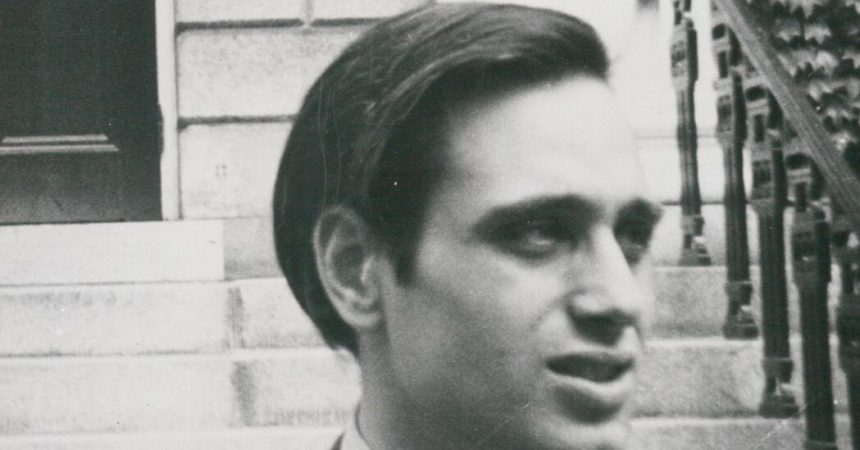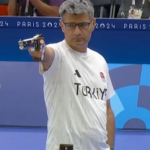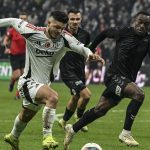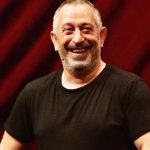Edward Jay Epstein, an iconoclastic author whose deeply researched books challenged conventional wisdom about controversies ranging from whether John F. Kennedy was killed by a lone assassin to whether the whistle-blower Edward Snowden was really a Russian spy, has died in Manhattan. He was 88.
The cause was complications of Covid, his nephew Richard Nessel said. He said Mr. Epstein was found dead in his apartment on Tuesday.
A professional skeptic, Mr. Epstein wrote more than two dozen nonfiction books, many involving allegations of government conspiracies and corporate dereliction. Some raised more questions than they answered.
In an improbable start to a prolific career, he debuted as an author early in 1966 when he transformed his master’s thesis at Cornell University into a book, “Inquest: The Warren Commission and the Establishment of Truth.” The New York Times called it “the first book to throw open to serious question, in the minds of serious people,” the conclusions reached by the presidential panel appointed to investigate President Kennedy’s assassination in Dallas on Nov. 22, 1963.
That very day in 1963, Mr. Epstein had borrowed his stepfather’s car and driven from New York City to the Cornell campus in upstate Ithaca, N.Y., to try to wangle his way back into school after having flunked out seven years earlier.
“The entire campus seemed eerily deserted,” he recalled in his memoir, “Assume Nothing: Encounters With Assassins, Spies, Presidents and Would-Be Masters of the Universe” (2023), until he encountered a lone student, who informed him of Kennedy’s death.
Thanks to a mentor, the political scientist Andrew Hacker, whose class was one that Mr. Epstein had aced, Mr. Epstein was readmitted and encouraged to write his thesis on the assassination. In doing so he gained access to every member of the seven-man Warren Commission except its leader, Chief Justice Earl Warren.
His book raised doubts about the commission’s finding that Kennedy was killed by a lone assassin, basing them largely on what Mr. Epstein considered serious deficiencies in the panel’s investigation. “Inquest” was published a few months before “Rush to Judgment” by Mark Lane, another in a tsunami of books that suggested that the commission had been hampered by time constraints, by limited resources and access, and by Justice Warren’s demand for unanimity to make its conclusions more credible.
“It was the only master’s thesis I know of that sold 600,000 copies,” Professor Hacker, who now teaches at Queens College, said in a phone interview.
A decade after “Inquest” was published, the House Select Committee on Assassinations conducted a much more thorough forensic investigation. Its report suggested the possibility of more than one shooter and a possible conspiracy, but concluded unequivocally: “Lee Harvey Oswald fired three shots at President John F. Kennedy. The second and third shots he fired struck the president. The third shot he fired killed the president.”
Mr. Epstein accepted the findings, acknowledging that they answered the questions he had raised. “In the light of the methodical and open nature of this examination, there was no mystery left,” he wrote.
Among his subsequent books were “News from Nowhere: Television and the News” (1973); “The Rise and Fall of Diamonds” (1982), which exposed the economic impact of the diamond industry in southern Africa; “Deception” (1989), based on his interviews with the Central Intelligence Agency’s former chief of counterintelligence James Jesus Angleton; “The Assassination Chronicles: Inquest, Counterplot and Legend” (1992); and “The Secret History of Armand Hammer” (1996), which detailed ties between that American businessman and the Soviet government in the 1920s and ’30s.
He also wrote “How America Lost Its Secrets: Edward Snowden, the Man and the Theft” (2017), in which he detailed how Mr. Snowden, as a young U.S. intelligence contractor, disclosed hundreds of American classified documents to news organizations, becoming one of the world’s most hunted fugitives. Mr. Epstein concluded that in Mr. Snowden’s defection to Russia and contact with Russian agents, he was less a heroic whistle-blower than a prized intelligence asset for Moscow.
While most of Mr. Epstein’s books won plaudits for their meticulous research, Nicholas Lemann, in The New York Times Book Review, wrote that the Snowden one was “an impressively fluffy and golden-brown wobbly soufflé of speculation, full of anonymous sourcing and suppositional language.”
Mr. Epstein’s memoir, “Assume Nothing,” is littered with dropped names (some 650 in the index, many of whom he actually knew). They include Jeffrey Epstein (no relation), the disgraced financier and registered sex offender, with whom Mr. Epstein palled around at one point.
In his New York Times Magazine column, William Safire once described Mr. Epstein as “the leading writer in the gray world of spies and moles.”
He was born Edward Jay Levinson on Dec. 6, 1935, in Brooklyn to Albert and Betty (Opolinsky) Levinson. His mother was an abstract sculptor, his father a financier in the fur trade who died of a heart attack when Edward was 7. His mother remarried, to Louis Epstein, an English-born shoe manufacturing executive, who adopted Edward in 1945. He was raised in the Midwood section of Brooklyn, where he attended Midwood High School, and in Rockville Centre, on Long Island, where he graduated from South Side High School.
At Cornell, Mr. Epstein was an erratic student. He was suspended after the 1956 spring semester for failing four courses, although he had received good grades in a 19th-century European literature course taught by Vladimir Nabokov and an A in Professor Hacker’s class on the U.S. Congress.
When he returned after 1963, Mr. Epstein completed his undergraduate degree and a master’s simultaneously, both in government, and graduated in 1966.
“He was the most interesting student I ever had,” Professor Hacker said. “There was a kind of mock ingenuousness about him. He would pretend he didn’t know anything.”
Mr. Epstein earned a doctorate in 1972 from the Harvard-M.I.T. Joint Center for Urban Studies, where his coursework was overseen by Prof. Daniel Patrick Moynihan, the future U.S. senator from New York.
For three years Mr. Epstein taught political science at Harvard, the University of California, Los Angeles, and M.I.T., and wrote part-time for The New Yorker. But he decided to return to the city of his birth to become a full-time author rather than pursue an academic career any further.
“I wanted to be in New York, ever since I met Clay Felker,” the editor of New York Magazine, he said in an interview last year with the online magazine Air Mail. “He knew the whole world.”
Mr. Epstein lived alone in a lavish, rent-controlled apartment on Manhattan’s Upper East Side. His nephews were his closest survivors.
Under Professor Hacker’s mentorship at Cornell, Mr. Epstein began looking beyond the Warren Commission’s conclusions to explore how that panel had reached its verdict on the assassination. He was 29, he recalled in his memoir, and had never even conducted a single in-depth interview.
“I had still not graduated from college,” he wrote. “I had no experience in journalism. I had never even worked on a school newspaper or known a reporter.”
Yet as Richard Rovere, the veteran Washington correspondent for The New Yorker, wrote in the book’s introduction: “Here we have something which should make scholars proud and journalists envious and ashamed. Mr. Epstein’s scholarly tools happen to be those employed day in and day out by journalists. But the press left it to a single scholar to find the news.”
Mr. Epstein had an insatiable curiosity, writing about anything and everything, from the economics of Hollywood to the rape accusation against Dominique Strauss-Kahn, the former head of the International Monetary Fund, by a Manhattan hotel maid in 2011. (Mr. Epstein suggested that it had been a political setup staged to embarrass him. Mr. Strauss-Kahn and the maid ultimately settled her lawsuit against him.)
Michael Wolff, a fellow maverick investigative author, said of Mr. Epstein by phone, “He saw his job as a journalist as challenging, or, in fact, undermining, all conventional wisdom, which he did with a rigor born of both deep research and of knowing exactly who to call — because part of his trade was to know everybody.”
He added: “Ed’s politics were the joie de vivre of skepticism. Was he right? Curiously, I don’t think he was out to be right. He was out to ask the questions that others avoided or didn’t think of.”











